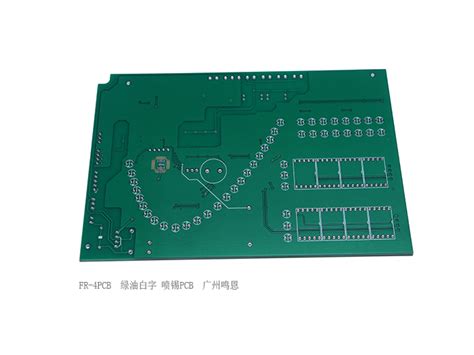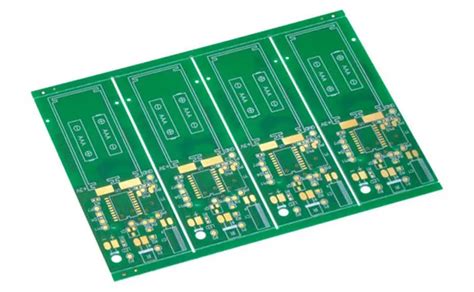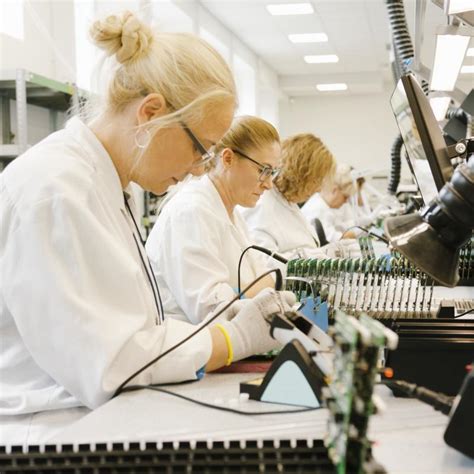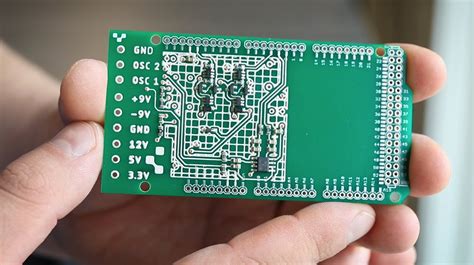The Evolution and Applications of Circuit Board LEDs
Introduction to Circuit Board LEDs
Light Emitting Diodes (LEDs) mounted on circuit boards represent one of the most significant advancements in modern electronics lighting technology. These tiny semiconductor devices have revolutionized illumination across countless industries, from consumer electronics to automotive lighting and architectural design. Circuit board LEDs combine the energy efficiency and longevity of LED technology with the versatility and reliability of printed circuit board (PCB) integration.
Unlike traditional lighting solutions, PCB-mounted LEDs offer unparalleled design flexibility, allowing engineers to create lighting solutions in virtually any shape or configuration. This article explores the technology behind circuit board LEDs, their various types, manufacturing processes, applications, and future developments that promise to further transform lighting technology.
The Fundamentals of LED Circuit Board Technology
How LEDs Work on Circuit Boards
At their core, LEDs are semiconductor devices that emit light when an electric current passes through them. When mounted on circuit boards, LEDs become part of a larger electronic system that controls their operation. The circuit board provides both the physical support and the electrical connections necessary for the LEDs to function properly.
The basic operation involves:
- A semiconductor chip (typically made of gallium-based compounds)
- An anode and cathode for electrical connections
- A plastic lens that focuses the light
- A heat-conducting base that transfers thermal energy away from the semiconductor
When voltage is applied across the anode and cathode, electrons recombine with electron holes within the semiconductor, releasing energy in the form of photons—the basic unit of light.
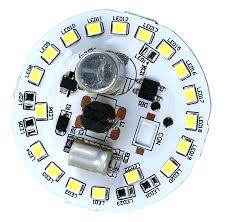
PCB Materials for LED Applications
The choice of circuit board material significantly impacts LED performance, especially for high-power applications. Common PCB materials include:
- FR-4: The most common PCB substrate, made of woven fiberglass with an epoxy resin binder. Suitable for low-to-medium power LEDs.
- Metal Core PCBs (MCPCB): Feature a metal base (usually aluminum) for superior heat dissipation. Essential for high-power LED applications.
- Flexible PCBs: Made of flexible plastic substrates like polyimide, allowing for curved LED installations.
- Ceramic PCBs: Offer excellent thermal conductivity and electrical insulation, ideal for high-performance LED applications.
The thermal management properties of these materials are crucial because excessive heat dramatically reduces LED lifespan and light output.
Types of Circuit Board LEDs
Through-Hole vs. Surface Mount LEDs
- Through-Hole LEDs:
- Traditional mounting method where LED leads are inserted through holes in the PCB
- More mechanically robust but require more space
- Typically used in prototyping and applications where durability is prioritized over miniaturization
- Surface Mount Device (SMD) LEDs:
- Mount directly onto the surface of PCBs
- Much smaller and allow for higher density LED arrays
- Enable automated assembly processes
- Currently the dominant LED packaging technology
Common LED Packages on Circuit Boards
- Standard LED Packages:
- 5mm and 3mm through-hole LEDs
- 1206, 0805, 0603 SMD sizes (numbers represent dimensions in hundredths of an inch)
- High-Power LED Packages:
- Luxeon, Cree XLamp, and similar high-output LEDs
- Require specialized thermal management solutions
- COB (Chip-on-Board) LEDs:
- Multiple LED chips packaged together as a single lighting module
- Provide high lumen density with excellent uniformity
- Reduce the need for multiple discrete components
- RGB LEDs:
- Combine red, green, and blue LEDs in a single package
- Enable full-color lighting and dynamic color changing
- Widely used in decorative and display applications
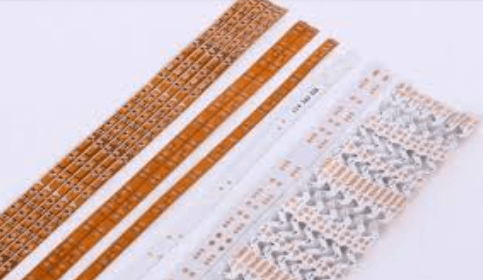
LED Circuit Board Design Considerations
Thermal Management
Effective heat dissipation is the most critical aspect of LED circuit board design. Key considerations include:
- Thermal vias: Small holes filled with conductive material that transfer heat to other PCB layers
- Heat sinks: Often integrated into the PCB design for high-power LEDs
- Thermal interface materials: Special pastes or pads that improve heat transfer
- Copper thickness: Thicker copper layers conduct heat more effectively
Electrical Design
Proper electrical design ensures optimal LED performance and longevity:
- Current regulation: LEDs require constant current rather than constant voltage
- Driver circuits: Can be simple resistors for low-power LEDs or complex IC-based solutions for high-power applications
- Voltage drop considerations: Important for long LED strips or series-connected arrays
- EMI suppression: Some LED circuits can generate electromagnetic interference
Optical Design
The circuit board layout affects light distribution and quality:
- Reflective surfaces: White solder mask or additional reflective coatings increase light output
- LED spacing: Determines uniformity of illumination
- Optical lenses: Sometimes integrated directly into the PCB assembly
- Diffusers: Used to soften and spread light evenly
Manufacturing Processes for LED Circuit Boards
PCB Fabrication
The manufacturing process for LED circuit boards follows standard PCB fabrication with some specialized steps:
- Substrate preparation: Cleaning and preparing the base material
- Circuit patterning: Applying the conductive traces (typically using photolithography)
- Etching: Removing unwanted copper
- Drilling: Creating holes for through-hole components or vias
- Solder mask application: Insulating layer that prevents short circuits
- Silkscreen printing: Adding labels and identifiers
- Surface finishing: Applying protective coatings (often HASL, ENIG, or OSP)
LED Assembly Processes
- Solder Paste Application: Using stencils to deposit solder paste on PCB pads
- Component Placement: Automated pick-and-place machines position SMD LEDs
- Reflow Soldering: Heating the assembly to melt solder and create permanent connections
- Through-Hole Component Insertion: For traditional LED packages
- Wave Soldering: For boards with mixed SMD and through-hole components
- Inspection and Testing: Automated optical inspection (AOI) and electrical testing
Specialized Processes for LED Boards
- Thermal via filling: Improves heat transfer in high-power applications
- Conformal coating: Protects against moisture and environmental factors
- Underfill application: Strengthens the bond between large LED packages and the PCB
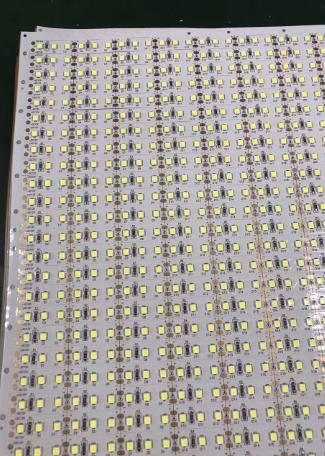
Applications of Circuit Board LEDs
Consumer Electronics
- Backlighting for LCD displays in TVs, monitors, and smartphones
- Status indicators on virtually all electronic devices
- Keyboard backlighting in laptops and peripherals
- Decorative lighting in gaming hardware and appliances
Automotive Lighting
- Interior lighting (dashboards, reading lights, ambient lighting)
- Exterior lighting (headlights, taillights, turn signals)
- Advanced driver assistance systems (ADAS) using infrared LEDs
General Illumination
- LED bulbs and fixtures for residential and commercial use
- Street lighting and area illumination
- Industrial lighting in factories and warehouses
- Specialty lighting for medical and scientific applications
Signage and Displays
- LED billboards and large format displays
- Retail signage and channel letters
- Scoreboards and information displays
- Architectural lighting and facade illumination
Emerging Applications
- Horticultural lighting for indoor farming
- UV curing in industrial processes
- Li-Fi (light-based data transmission)
- Wearable electronics and smart clothing
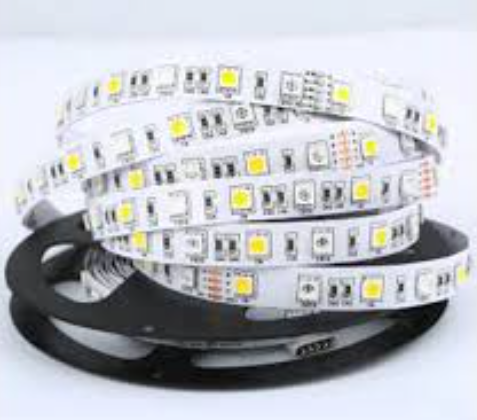
Advantages of PCB-Based LED Solutions
Energy Efficiency
LEDs on circuit boards typically convert 80-90% of their energy into light, compared to just 10-20% for traditional incandescent bulbs. This efficiency translates to:
- Lower electricity costs
- Reduced environmental impact
- Longer battery life in portable devices
- Smaller power supplies and reduced infrastructure requirements
Longevity
Properly designed LED circuit boards can provide:
- 25,000 to 100,000 hours of operation (compared to 1,000 for incandescent)
- Reduced maintenance costs
- Higher reliability in critical applications
- Consistent performance over time
Design Flexibility
PCB technology enables:
- Virtually any shape or form factor
- Easy integration with control electronics
- Scalability from single LEDs to massive arrays
- Customizable light color and intensity
Environmental Benefits
LED circuit boards offer:
- Mercury-free composition (unlike fluorescent lights)
- Reduced electronic waste due to longer lifespan
- Lower carbon footprint from reduced energy consumption
- Recyclable materials in many cases
Challenges and Limitations
Thermal Management Issues
Despite advances, heat remains a primary challenge:
- High temperatures reduce LED lifespan
- Thermal expansion can cause mechanical stress
- Heat dissipation requirements increase product size and cost
Complex Drive Requirements
LEDs require:
- Precise current regulation
- Potential need for voltage conversion
- More complex dimming solutions compared to traditional lights
- Careful circuit design to prevent flicker
Color Consistency
Maintaining consistent color:
- Across different production batches
- Over the LED’s lifetime
- At varying operating temperatures
- Between different manufacturers
Initial Cost Barriers
While long-term costs are lower:
- High-quality LED solutions have higher upfront costs
- Specialized thermal materials increase price
- Complex designs require more engineering resources
Future Trends in Circuit Board LED Technology
Miniaturization
Ongoing developments include:
- Smaller, more efficient LED packages
- Higher density LED arrays
- Integration with other components
- Flexible and stretchable LED circuits
Smart Lighting Systems
The future involves:
- IoT-connected LED lighting
- Adaptive color and brightness
- Integration with sensors and controls
- Li-Fi enabled lighting solutions
Advanced Materials
Emerging technologies feature:
- Graphene-based LEDs and circuits
- Improved thermal interface materials
- Better phosphors for color quality
- Higher performance substrates
Manufacturing Innovations
Future production may include:
- 3D printed LED circuits
- Roll-to-roll PCB fabrication
- Advanced automation for complex assemblies
- Environmentally friendly production processes
Conclusion
Circuit board LEDs have transformed lighting technology across countless industries, offering unprecedented efficiency, longevity, and design flexibility. From simple indicator lights to complex illumination systems, PCB-based LED solutions continue to evolve, pushing the boundaries of what’s possible with electronic lighting.
As thermal management improves, manufacturing costs decrease, and new materials emerge, we can expect LED circuit boards to become even more prevalent in our daily lives. The integration of smart technologies and IoT connectivity will further enhance their capabilities, making lighting not just a utility but an intelligent, responsive element of our environment.
The future of circuit board LED technology shines brightly, promising continued innovation that will illuminate our world in ways we’re only beginning to imagine. For engineers, designers, and manufacturers, staying abreast of these developments will be crucial to creating the next generation of LED lighting solutions.

